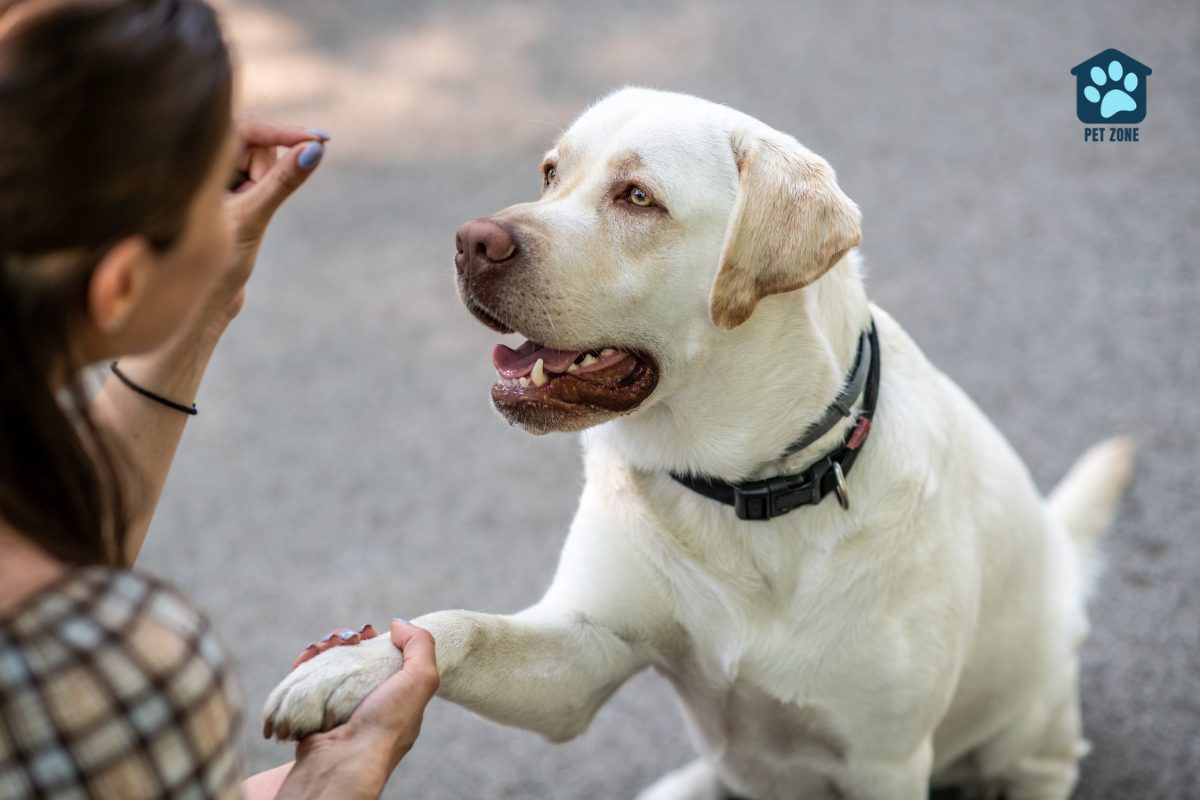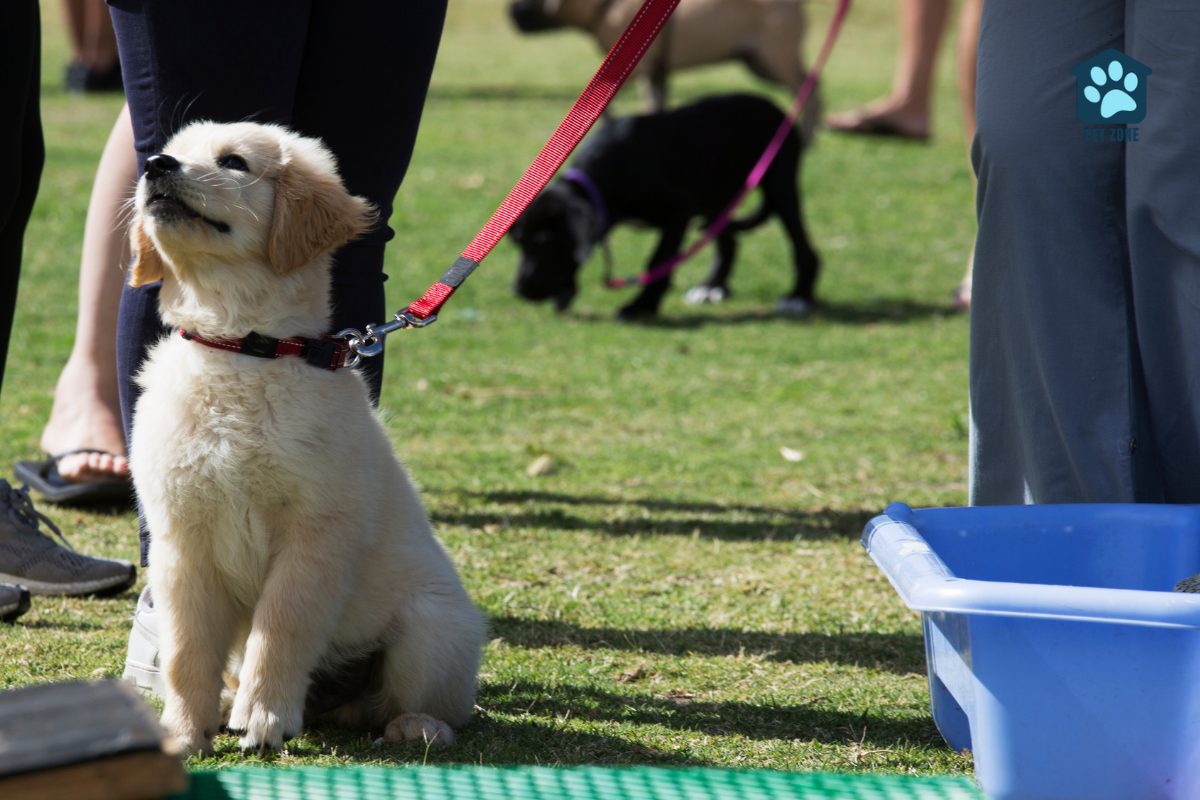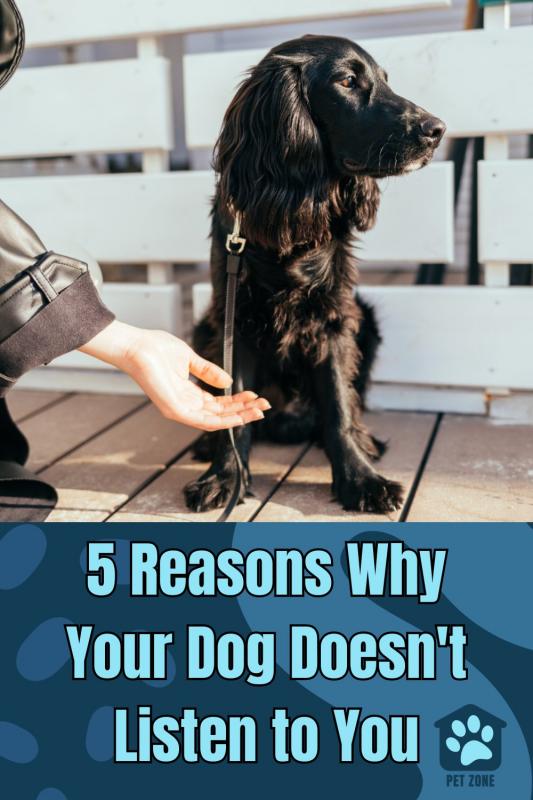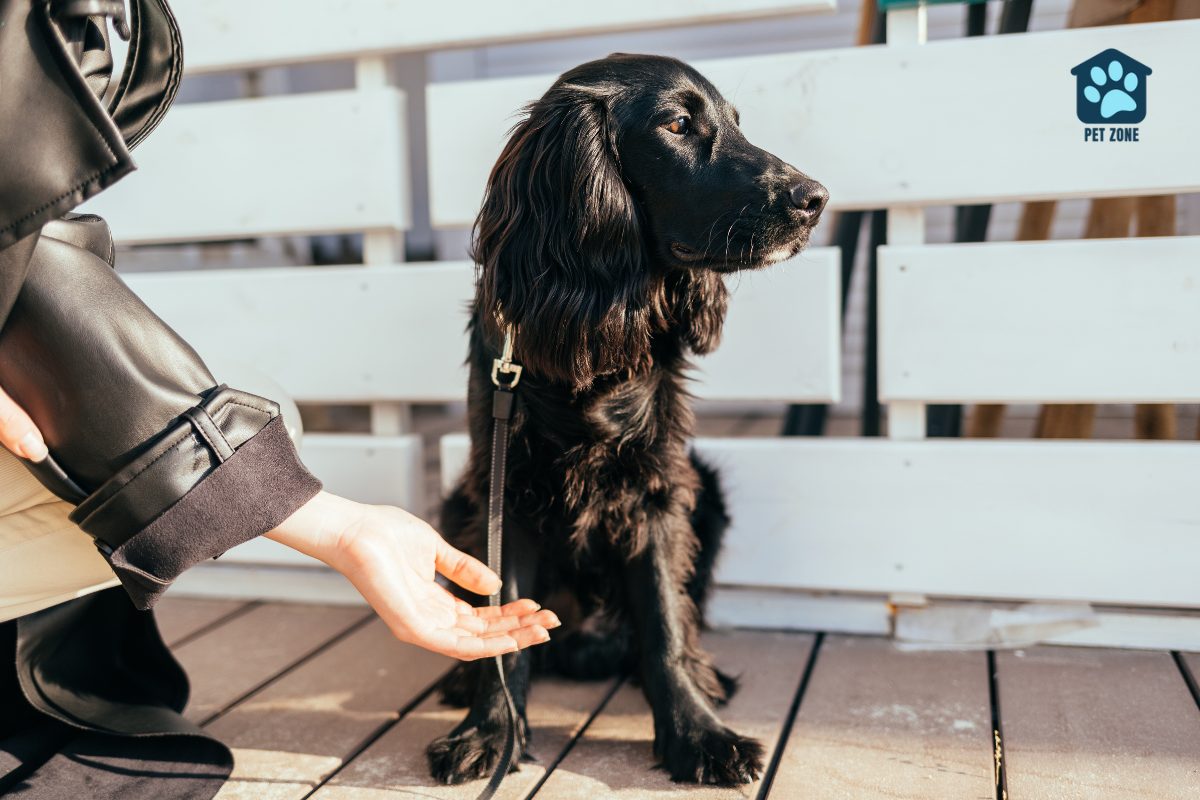Estimated reading time: 12 minutes
Hey there, dog owners! Have you ever called your pup and got nothing but a wagging tail in the distance? We know, it can drive you nuts. It’s like they’ve got selective hearing, right? Well, you’re not alone in this. It happens to the best of us, all over the globe.
Don’t worry, though—we’re diving into five reasons why your dog might be giving you the cold shoulder. Plus, we’ve got some solid tips to get your four-legged friend to perk up those ears and listen up. Ready to turn things around? Let’s get started!
Key Takeaways
- Dogs may not listen due to factors such as overshadowing, generalization, ineffective pressure, demotivating motivators, and unreasonable expectations.
- To improve your dog’s listening skills, be patient, stay positive, and consistent in training. Use clear commands and rewards that motivate your dog.
- Teething, puberty, breed tendencies, distractions, and lack of training/reinforcement can also contribute to disobedience in dogs. Understanding these causes can help address the issue effectively.
Why Won’t Your Dog Listen: 5 Common Reasons
- Overshadowing: When you use too many cues or commands at once, it can overwhelm your dog and cause them to ignore you.
- Generalization: Dogs may have difficulty applying commands in different environments or with various distractions because they have not been trained to generalize their obedience.
- Ineffective Pressure: Using forceful methods like pulling on the leash or yanking your dog can create resistance and make them less likely to listen.
- Demotivating Motivators: If the rewards or motivators you offer are not enticing enough for your dog, they may lose interest in listening to your commands.
- Unreasonable Expectations: Setting expectations that are too high for your dog’s age, breed, or training level can lead to frustration and lack of compliance.

Overshadowing
Overshadowing is when your dog doesn’t get what you say because something else gets his attention. It can happen if your hand moves too much or other sounds are louder than your voice.
This makes the dog not react to your calls or signs. To stop overshadowing, help your dog learn what each sound and sign means. Make sure all sounds and signs have only one meaning to keep things clear for the dog.
Generalization
Your dog may not listen in new places. This happens when a command is only linked to one area. Your dog sits well at home, but won’t sit at the park.
This is generalization failing. Dogs don’t see that ‘sit’ means the same thing everywhere. Testing your commands in different sites helps fix this.
Begin with quiet areas and slowly get louder ones involved. For example, try changing from your backyard to a calm part of the dog park first before heading into busier areas!
By doing this, your furry friend will learn that “sit” means the same whether they’re cozy indoors or outside chasing squirrels!
It’s key that you stay patient and give many treats for obeying commands in these harder spots.
Ineffective Pressure
You might be putting too much pressure on your dog. You push the dog to learn and do things when it’s not ready. This is called ineffective pressure. A dog gets scared if you put too much pressure on it. It can make the dog stop listening to you.
You have to keep in mind that dogs are not humans. They learn at their own pace, just like kids do. If a child doesn’t get a math problem right away, we don’t yell or punish them. We give them time to understand it better.
The same goes for your pet; take small steps so the training isn’t scary or hard for your pup.
Demotivating Motivators
Motivation plays a big role in getting your dog to listen to you. However, there are certain things that can actually demotivate them. One reason is using low-value reinforcers as rewards. Your dog may not find these incentives appealing enough to follow your commands.
It’s important to understand what motivates your dog and use high-value rewards, like treats or praise, to encourage good behavior. This will help keep them engaged and eager to listen and learn from you. So, make sure you’re using motivating rewards that your furry friend really loves!
Unreasonable Expectations
It’s important to have realistic and reasonable expectations when it comes to your dog’s behavior. If you expect your dog to always listen and obey every command perfectly, you may be setting yourself up for disappointment.
Dogs are living creatures with their own personalities, instincts, and limitations. They may not always understand or be able to follow every command you give them. It takes time, patience, and consistent training for a dog to learn and understand what is expected of them.
So instead of expecting perfection, focus on small steps of progress and celebrate your dog’s achievements along the way.

Potential Causes of Disobedience
Teething, puberty, breed tendencies, distractions, and lack of training/reinforcement are all potential causes of disobedience in your dog.
Teething
Teething is a normal part of a dog’s development, just like it is for human babies. During this time, your dog’s baby teeth are replaced by adult teeth, which can cause discomfort and pain in their gums. This may lead to restlessness and excessive chewing on objects around the house.
It’s important to understand that teething is temporary and will pass with time. Many dog owners tend to scold or punish their dogs when they exhibit these behaviors during teething, but it’s essential to provide appropriate chew toys and redirect their attention instead.
By doing so, you can help alleviate their discomfort while preventing any damage to your belongings.
Puberty
During puberty, your dog goes through hormonal and physical changes, just like human teenagers. This can affect their behavior and make them less obedient.
A study has found that adolescent dogs are more likely to ignore commands from their main caregiver than older dogs, similar to how teenage kids can become less responsive to their parents.
So if your dog is going through puberty, it’s important to be patient and understanding as they navigate this stage of development. Keep up with consistent training and positive reinforcement to help them learn and grow out of any disobedient behaviors.
Breed tendencies
Understanding your dog’s breed tendencies is important when it comes to addressing their disobedience. Certain breeds may have a higher likelihood of exhibiting certain behaviors that can be mistaken for not listening or being disobedient.
By recognizing and understanding these tendencies, you can tailor your training techniques to address specific behavioral issues effectively. This will help improve communication with your dog and build a stronger bond between you both.
Keep in mind that breed-specific training may be necessary to successfully manage and address any disobedience your dog may display.
Distractions
Distractions can be a big challenge when it comes to getting your dog to listen. It’s important to remember that dogs are easily distracted by their surroundings, especially if they haven’t been trained in the presence of distractions before.
When there are lots of interesting things going on around them, it can be hard for dogs to focus on their owners and follow commands. To help your dog improve its listening skills, you need to gradually introduce distractions during training sessions.
This will teach your dog how to stay focused even when there are tempting distractions nearby, like other dogs or squirrels. By practicing with distractions in a controlled environment, your dog will become better at ignoring them and listening to you instead.
Lack of consistent training or reinforcement
One reason why your dog may not listen to you is due to a lack of training and reinforcement. Dogs need consistent guidance and positive reinforcement to understand what you want from them. Without proper training, they may not know how to follow commands or behave appropriately.
Training your dog is an ongoing process that goes beyond just the initial obedience classes. It requires patience, consistency, and clear communication.
By spending quality time with your dog and teaching them basic commands like sit, stay, and come, you can establish control over their behavior.
Reinforcement is equally important in training your dog. Using rewards such as treats or praise when they listen and follow commands helps reinforce good behavior. On the other hand, allowing disobedient behavior without consequences can reinforce undesired actions.

Tips for How to Get Your Dog to Listen Better
To improve your dog’s listening skills, be patient, stay positive, and be consistent in your training. Watch your tone and body language, burn off excess energy through exercise, and consider changing the environment to reduce distractions.
Check your expectations and use bribes effectively when necessary. Puppy classes can also be a helpful resource for teaching your dog to listen better.
Be patient
Training a dog takes time and patience. Your furry friend won’t learn everything overnight, so it’s important to be patient with them. Remember that dogs communicate differently from humans, and they may not understand your commands right away.
It’s essential to give them the time they need to process and respond to what you’re asking of them. Celebrate small victories along the way and reinforce their good behavior with positive reinforcement.
With consistency and patience, your dog will gradually improve their listening skills and become an obedient companion.
Stay positive
To improve your dog’s listening skills, it’s important to stay positive. Dogs respond better to encouragement and praise rather than punishment or harsh words.
When you use positive reinforcement, such as treats or verbal praise, your dog will be more motivated to listen and follow your commands. By focusing on rewarding good behavior instead of scolding bad behavior, you can create a positive learning environment for your furry friend.
Consistency is also key when it comes to staying positive. Make sure you’re using the same commands and rewards every time you train your dog. This helps them understand what you want from them and reinforces their training.
Be consistent
Consistency is crucial when training your dog to listen and follow commands. Dogs thrive on routine and repetition, so it’s important to provide clear and consistent instructions. Use the same words and gestures each time you give a command, and ensure that everyone in your household uses the same approach.
This helps your dog understand what is expected of them and makes it easier for them to learn. By being consistent in your training methods, you can help your dog develop better listening skills over time.
Watch your tone and body language
When communicating with your dog, it’s important to pay attention to your tone of voice and body language. Dogs rely on these cues to understand what you’re trying to communicate.
Use a calm and normal tone of voice when giving commands so that your dog can easily interpret what you want them to do.
Avoid shouting or using urgent tones unless there is an immediate need for action. Additionally, be mindful of your body language. Dogs are observant creatures and can pick up on subtle cues from your posture and movements.
By being aware of how you present yourself, you can better convey clear and consistent messages to your furry friend.
Burn off excess energy
To improve your dog’s listening skills, it’s important to burn off their excess energy. When dogs have too much energy, they can become overexcited and find it difficult to sit still and listen to you.
This is especially true for hyperactive dogs who need physical exercise to work off their extra energy. By engaging in physical activities like walks, runs, or playtime at the dog park, you can help your dog burn off that excess energy.
Additionally, mental exercises such as puzzle toys or training sessions can also tire out your dog mentally. When your dog is tired from these activities, they will be more focused and attentive when you try to teach them commands or communicate with them.
Change the environment
To improve your dog’s listening skills, it can be helpful to change the environment where you train them. This means finding a quiet and distraction-free area where they can focus on learning and following your commands.
Dogs can easily get distracted by things like other animals, people, or noises around them. By creating a calm and controlled space for training, you increase the chances of your dog paying attention to you and listening to your instructions.
Remember that dogs rely on their senses, so minimizing distractions will make it easier for them to understand what you want from them.
Check your expectations
It’s important to check your expectations when it comes to training your dog. Remember, dogs are not born knowing how to understand human language or follow commands. They need time and consistent training to learn what you want from them.
So, be patient with your furry friend and set realistic goals. Don’t expect your dog to immediately obey every command or understand complex instructions. Instead, start with simple tasks and gradually increase the difficulty as they progress.
By adjusting your expectations and providing consistent guidance, you can help your dog learn and improve their listening skills over time.
Use bribes effectively
To make dog training more effective, it’s important to understand the difference between bribes and rewards. Bribes are given before your dog performs the desired behavior, while rewards are given after.
Bribing your dog with food or treats may not be the most effective way to motivate them in the long run. Instead, using reward-based training can help create a well-behaved dog. Rewards should be something that holds value for your dog, such as praise or playtime.
By using rewards instead of bribes, you can build a stronger bond with your furry friend and encourage positive behaviors.
Consider puppy classes
Puppy classes are important for improving your dog’s listening skills. Here’s why:
- Socialization: Puppy classes provide a safe environment for your dog to interact with other dogs and people. This helps them learn how to behave around others.
- Basic commands: In puppy classes, trainers teach basic commands like sit, stay, and come. Your dog will learn to listen and follow these commands in a controlled setting.
- Training techniques: Professional dog trainers can show you effective techniques that will help your dog understand and respond to your commands.
- Distraction training: Puppy classes often include exercises to teach dogs to focus on their owners, even when there are distractions around. This is crucial for improving their listening skills in real-life situations.
- Problem-solving: Trainers can address any behavioral issues or challenges you may be facing with your dog’s obedience. They can provide guidance and solutions specific to your dog’s needs.

Conclusion
There are several reasons why your dog may not be listening to you. It could be due to overshadowing, generalization, ineffective pressure, demotivating motivators, unreasonable expectations, or a combination of these factors.
Understanding these reasons and addressing them with patience and consistency can help improve your dog’s listening skills. Remember to provide proper training and meet their physical and emotional needs for better communication with your furry friend.
As an Amazon Associate I earn from qualifying purchases.










Great information with ways to listen and improve our relationships with our dogs.
Getting your dog into a mental state that allows him to listen and give you the maximum attention is not easy. It requires a lot of training and routine. This post is very informative for dog owners struggling to get attention.
The biggest improvement I got was when I started to streamline all commands and worked together with my wife to do the same thing. Then it’s just repetition and routine.
Thanks for sharing 🙂
Good post! I’ve trained my Lola pretty well and still, there are time’s she’ll ignore me…but I think it’s a “princess of the house” personality thing. LOL
Interesting insights! I did often wonder why some dogs listen better than others.
Thanks for all this info. I always thought my dog wasn’t very smart when it came to commands – now I know I’m the one who hasn’t been so smart!
Dogs and children are so similar, don’t you think?? LOL